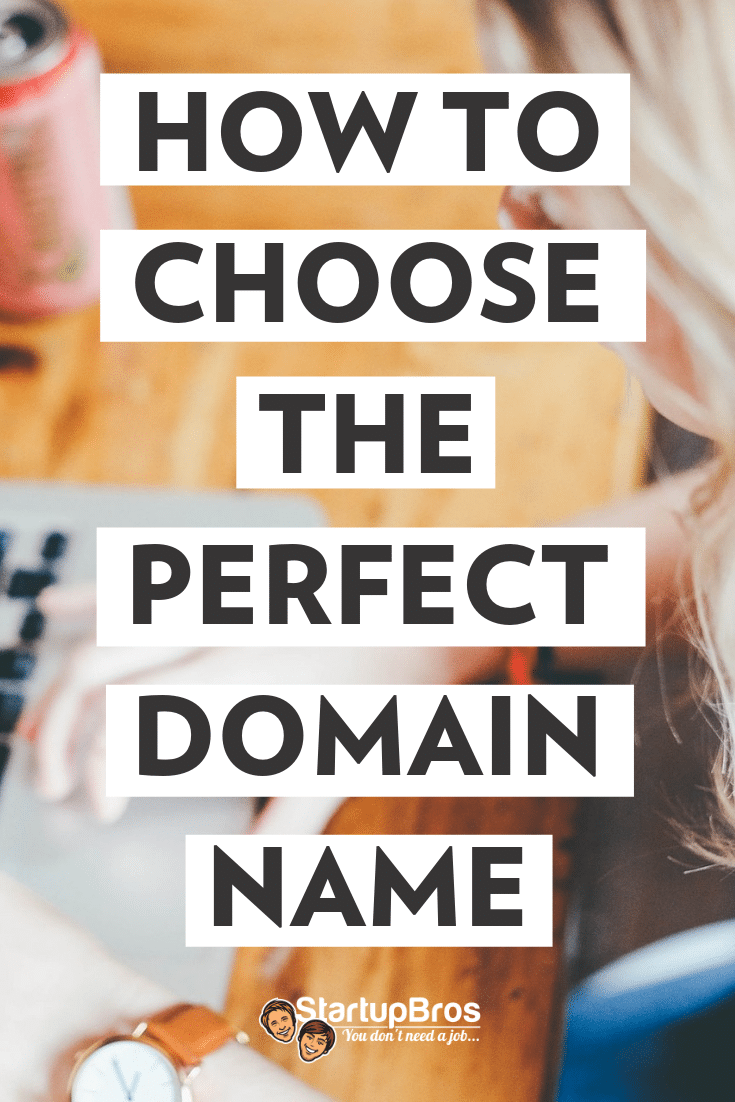
I’m sure you’ll agree with me when I say:
Choosing a domain name can be confusing.
You can be starting a new company, creating your first blog, or just tinkering with a side-hustle.
And your gut says to choose the “perfect” name that works for branding and SEO.
Something that you won’t feel awkward telling people about.
But how do you do it?
Well, in this article, I’ll show you.
In this no-nonsense guide, you’ll learn how to choose a domain name without second-guessing yourself.
You’ll also learn how to get it online in under 45 minutes.
Sound good? Read on to find out more!
Here’s What We’re Covering:
1. What is a Domain Name (and What Does it Do)?
2. The 5 Elements of a Good Domain Name
- Matches Your Brand Name
- Easy to Spell and Say
- Short Enough, but Accurate
- It’s Not a Google Keyword
- Ends in .Com
3. How to Choose a Domain Name (And Get it Online)
- Check Your Brand Name Availability
- Generate Variations (If Applicable)
- Buy It!
- Host It!
What is a Domain Name?
Your domain name is your online address.
It’s the equivalent of renting an office space or retail shop in the real world.
You’re reserving a place where people can find you and what you offer.
And most likely the domain name starts with www. and ends with .com, like:
After entering the domain name into your web browser, you’re taken to a website and able to explore it:

Choosing a domain name is the first stage in hosting a website.
And once you have the name, you can create a store, blog, portfolio or anything else.
Your domain name has two practical uses you benefit from.
First, it provides an exact location for you to send someone to.
Whether you add a link to a social profile, print it on a business card or just tell a friend in conversation, you know people will go to the right place.
This type of website traffic is important and can account for thousands of visits to your site every week:

Second, it helps you build an effective and consistent brand.
Because your domain name offers visitors their first glimpse into who you are and what you do.
It’s like the internet’s first impression.
And if your domain name is accurate and trustworthy, people will visit and stay on your site.
But, if it looks dodgy, well…they’re going to leave.
I mean, which one of these would likely trust more?

Domain Names in Everyday Use…
Domain names have also become a part of our day-to-day language. Heck, you’ve probably told a friend or family member to “Just go to…” a website in the last few days.
Some brands even make their domain name and company name one and the same.
In the UK where I’m from, companies like webuyanycar.com have invested thousands into catchy TV jingles to get their names to stick in our brains:
See how this shows the importance of a domain name to anyone wanting to build an online presence.
Choosing the right domain name is the most important part of launching a business.
Get it right, and you can reap lots of benefits.
And if you get it wrong your website will always fight an uphill battle. (No pressure…)
Let’s take a look at how you can get it right, shall we?
The 5 Elements of a Good Domain Name
When you’re choosing a domain name, there are five main elements you need to consider.
In our experience, if you can tick all five of these boxes, you’ll have a clear, crisp and creative name to propel your brand forward.
#1: It Matches Your Brand Name
Your domain name should be consistent with your brand name.
This makes your website easy to find and reduces any friction in the process.
And people should be able to assume your domain name by hearing your brand name.
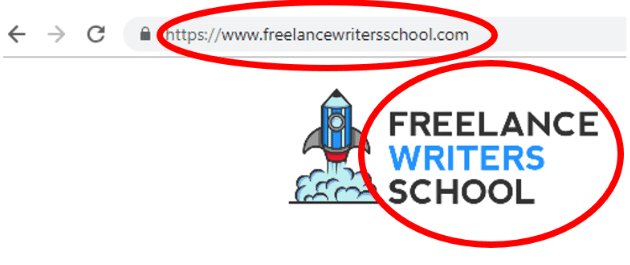
Your brand name can look different depending on what kind of business you have:
- Ecommerce: Your company would be like Nike or Apple
- Blog: The name of your blog would be like Kloudio Blog or Backlinko
- Influencer: Personal branding is more important like Mark Manson or Peter McKinnon
- Portfolio / Services: A more detail oriented name helps like, Illustrate Digital
The goal is to get your domain name as close as possible to your business.
You can add suffixes and prefixes, as long as you don’t breach any trademark or copyright boundaries.
This means that if you’re starting a new brand from scratch you should factor your domain name to your brand or company.
And if there’s no available domain name, consider tweaking your brand name to fit.
#2: Confirm It’s Easy to Spell and Say
Your domain name should be easy to spell and say.
There should be comfort in telling friends about your domain name.
And they should be able to hear it and know how it’s spelled.
There are 3 key benefits of a great domain:
- It’s memorable
- More likely to be recommended
- Easier to find and access
Also, triple check that your domain name doesn’t look inappropriate when it’s written down with words joined together.
Allow me to explain this further…
Let’s backtrack to Susan Boyle’s debut album.
When promoters created the hashtag for the album’s launch, “Susan Album Party”, they found themselves with an accidental viral hashtag!
It received a lot of press:

What seemed a harmless phrase did some real damage to their branding.
So, be sure to triple check for any potential misinterpretations of your domain name!
#3: It’s Short Enough, but Accurate
Your domain name should be as short as possible.
Because it’s easier to share, remember and talk about.
Look, there’s a reason Amazon isn’t called:
“Jeff’s Big Online Megastore For Everything You Could Ever Want”.
It’s worth keeping your idea short enough that your domain name has all the necessary information, but stays short.
Take the eCommerce website:
I Want One Of Those (iwantoneofthose.com), as an example. Their domain name is long:

But it’s branded, accurate and the words are simple enough to remember.
This is short enough for what they need.
If they’d gone any shorter and used IWOOT.com or Iwantoot.com, they could have damaged their brand.
Or worse, made their website harder to find, because the domain is harder to pronounce and spell.
If a domain name needs to be longer, that’s okay.
Just don’t go overboard or include unnecessary information.
#4: It’s Not a Google Keyword
Your domain name shouldn’t be a Google keyword.
For a long time, it was normal practice to create what’s called an Exact Match Domain. This was a domain name based on a profitable Google keyword like:
- Cheap sunglass reviews
- Large kitchen appliances
- Best 4k drones
Google would give these domains extra traffic.
But as the search engine grew, they got smart to this technique, and began to mark lots of these domains as “spam.”
Overnight, websites lost thousands in revenue and potential customers because they’d built a business which was at the beck and call of the Google algorithm.
It’s better to focus on branded domain names, and build a business that can live outside of a search engine!
#5: It Ends in .com (or Your Target Country)
Your domain name should end in (.com) but why?
Because (.com) is the standard suffix for websites around the world.
It’s deeply ingrained in society, and therefore much easier to remember.
The (.com) extension is also location free and allows you to attract visitors from all over the world.
There are only two exceptions to this rule:
- Ecommerce: .com is widely assumed to be the eCommerce suffix for America. When you’re not selling worldwide (and don’t plan to), you should go with your country’s suffix instead.
- Location bound: Or when creating a publication or store targeted to people in a specific country, stick to the relevant suffix (like .co.uk or .jp)
If the plan is to build a website to sell in the future, a .com domain is the easiest to sell.
The website can be changed by the new owner to anywhere else in the world with minimal effort.
Okay, that’s enough theory about how to choose your domain name for now.
Let’s focus on actually choosing a domain name!
How to Choose a Domain Name
In this section, I’ll show you how to choose a domain name and host it in just three easy steps.
Follow-along and you’ll have your own hosted domain in the next 45 minutes!
Step 1: Check Brand Name Availability
The first step is to use a domain name checker to see if your brand name is available.
Ideally, you want to get the domain www.[yourbrand].com. So, you’ll first want to see if it’s at all available.
To do this head over to a Formal Founder and pop your brand name into their domain search engine:
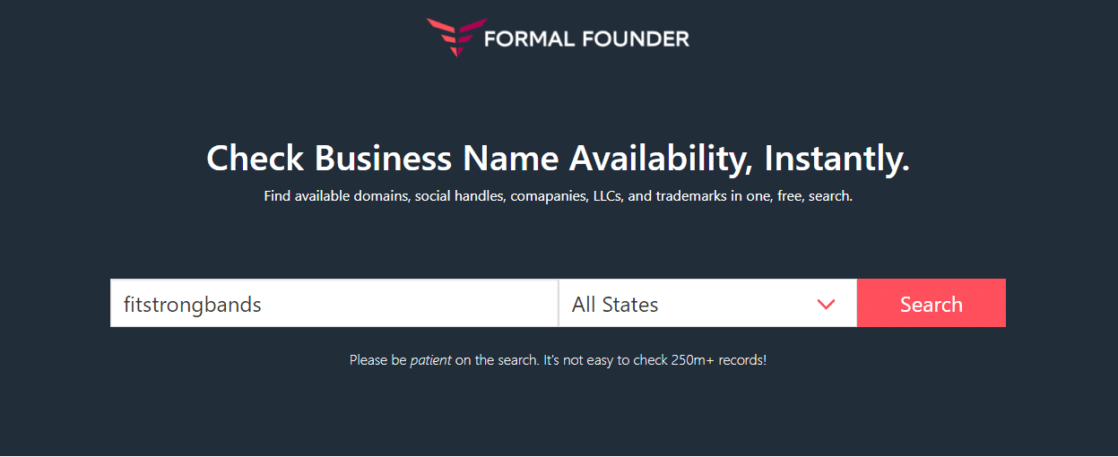
This shows you which versions of the domain you can use and how much they will cost.
I need a domain for my eCommerce sports store, “FitStrongBands”, that I just invented right this second…
Here are the results I get:
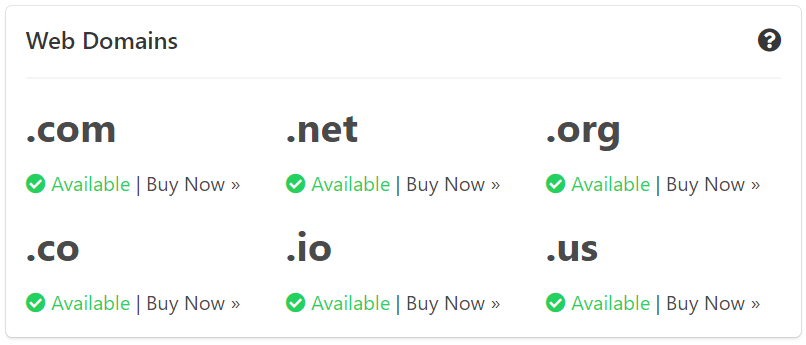
If your brand name is unique, then you should have no problem getting the (.com) domain.
Next, we can scroll down and check if the brand name we want is available on social media.
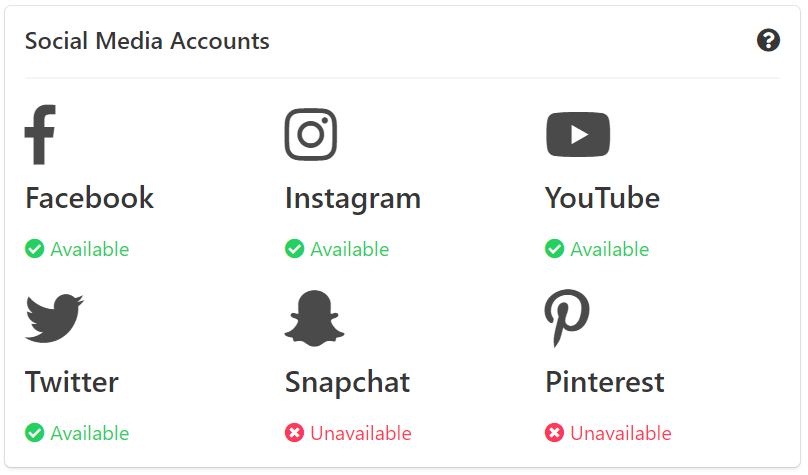
The price should only be a few dollars.
So if your domain is available and most of the social media handles are available then buy the domain quickly!
Now, go ahead and jump to step 2…

But if it’s not, these are the most common roadblocks people hit.
- The domain is taken: another company or website is using the domain name for their business.
- It’s a premium name: the domain name is short and easily brandable, so domain registration companies charge a high price for it.

- Domain “sitters”: these are people who buy potentially popular domain names in advance, and then ransom them off at a higher price.
Possible Solutions…
When a website already exists with your domain name go back and come up with a new variation.
If the domain is a premium name or owned by a sitter, check the price they’re asking for and if it’s worth paying.
There’s a chance you need it to be this domain and you have a few thousand dollars to invest, go right ahead.
But you can also come up with some just-as-good variations which will cost you around $10.
Step 2: Generate Possible Variations
It’s not the end of the world if your domain name isn’t available.
Try and get creative and add different prefixes or suffixes to create something new!
Let’s stick with my eCommerce sports shop, FitStrongBands, to show you how this might look:
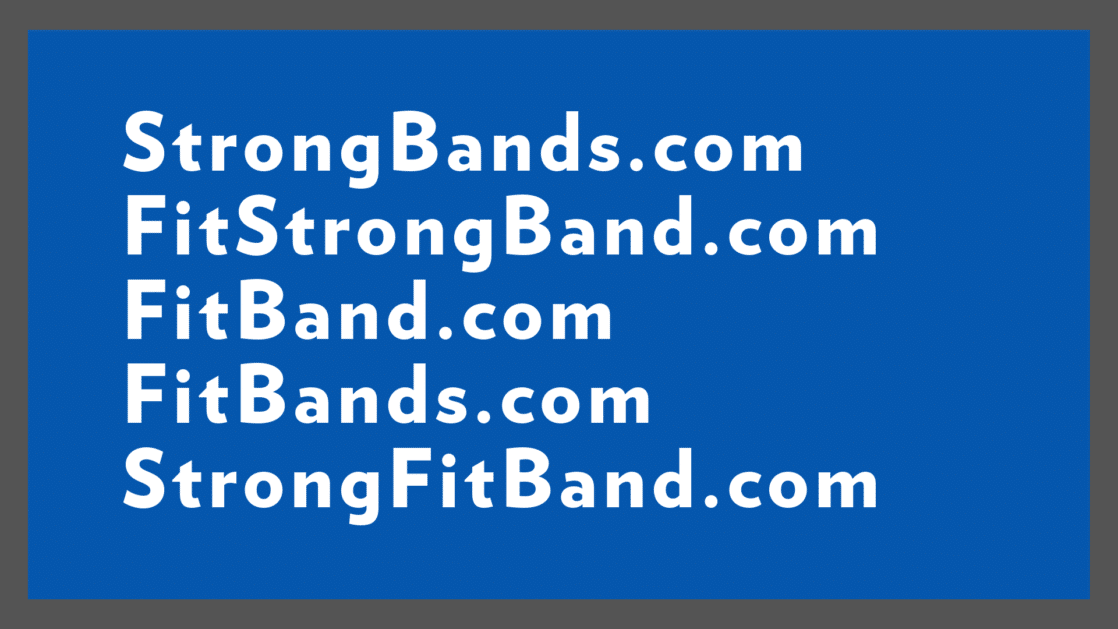
From that list I’d take either of the smaller variations of the domain names.
They’re short, sweet, accurate, memorable and easy to spell.
Once you’ve come up with a few ideas, pop them back into Formal Founder to see if they’re available.
When you find one you like, it’s time to…
Step 3: Recheck Brand Availability and Buy it
NameCheap is the most affordable place to buy domain names.
So, once you’ve completed your search, purchase it by clicking the “add to cart button”.
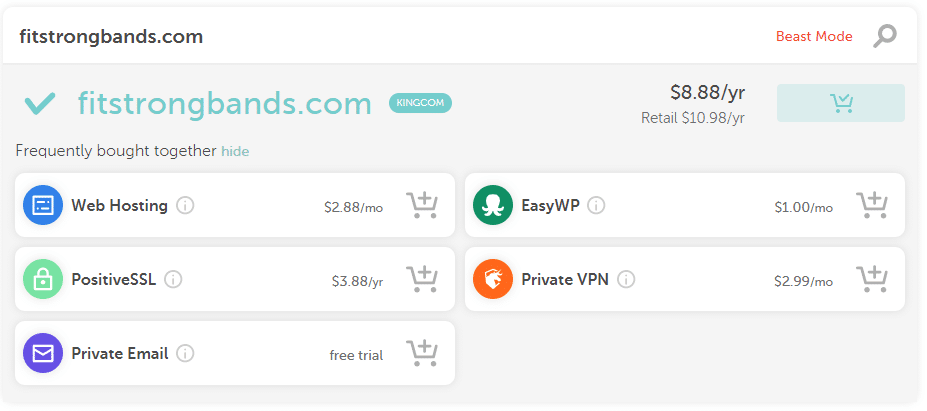
When you purchase the domain it will ask you if you want to buy any additional products, like hosting or WordPress packages.
Don’t buy hosting from NameCheap…
Instead, you should do it with a faster and more reliable service.
Step 4: Select a Hosting Plan
Once you’ve purchased your domain, it’s time to get it online.
Your domain name is your reserved space online, but hosting is what turns it into a living-and-working website people can visit.
To do this I recommend you use SiteGround hosting.
We use Siteground to host all of our websites here at Startupbros.
They’re fast, reliable and WordPress ready.
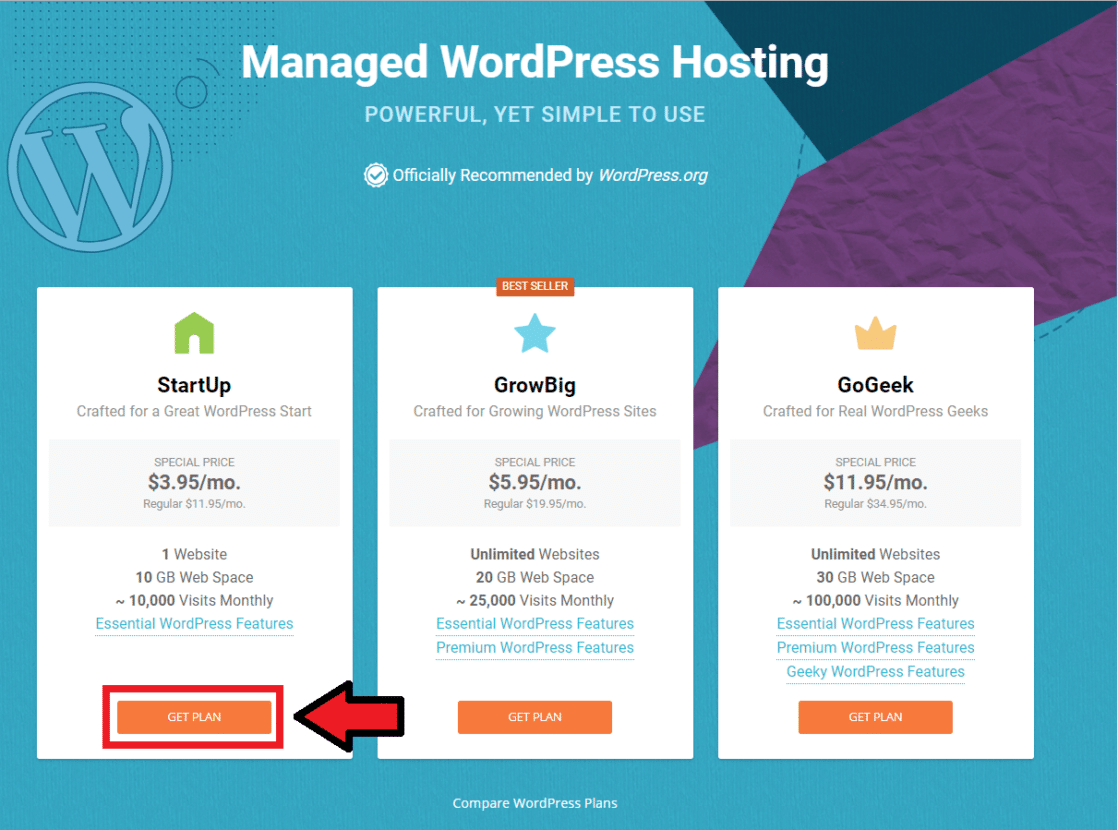
Take it from someone who isn’t tech-savvy, their customer support makes the process easy!
Just pick a hosting plan, purchase it, and they will help walk you through the rest.
Wrapping This Up…
I hope by now you’ve got a much better idea of how to choose your domain name, and the first steps you should take to get it online.
Remember to keep your domain name short, sweet, memorable and easy to spell.
If you can do that, well…you’re already onto a winner.
But now I want to know:
How helpful did you find this guide?
Do you still have any questions or sticking points you need help with?
Let me know in the comments and I’ll do my best to help you!

Hi Will, This is one of the most informative and article I’ve ever read on the internet. Though I have read many articles on this specific topic, I couldn’t find what should be the optimal length(character length) of domain name.